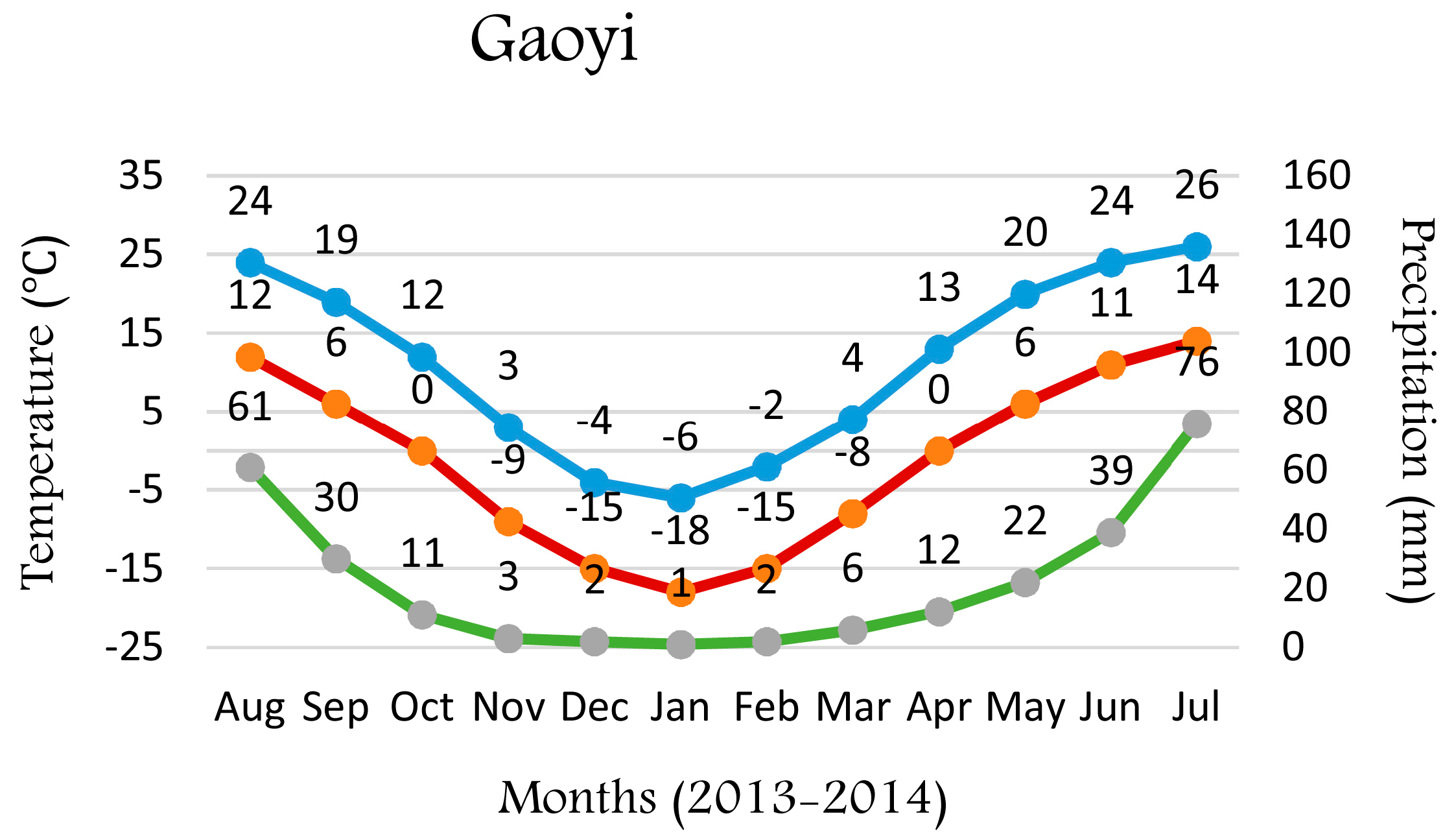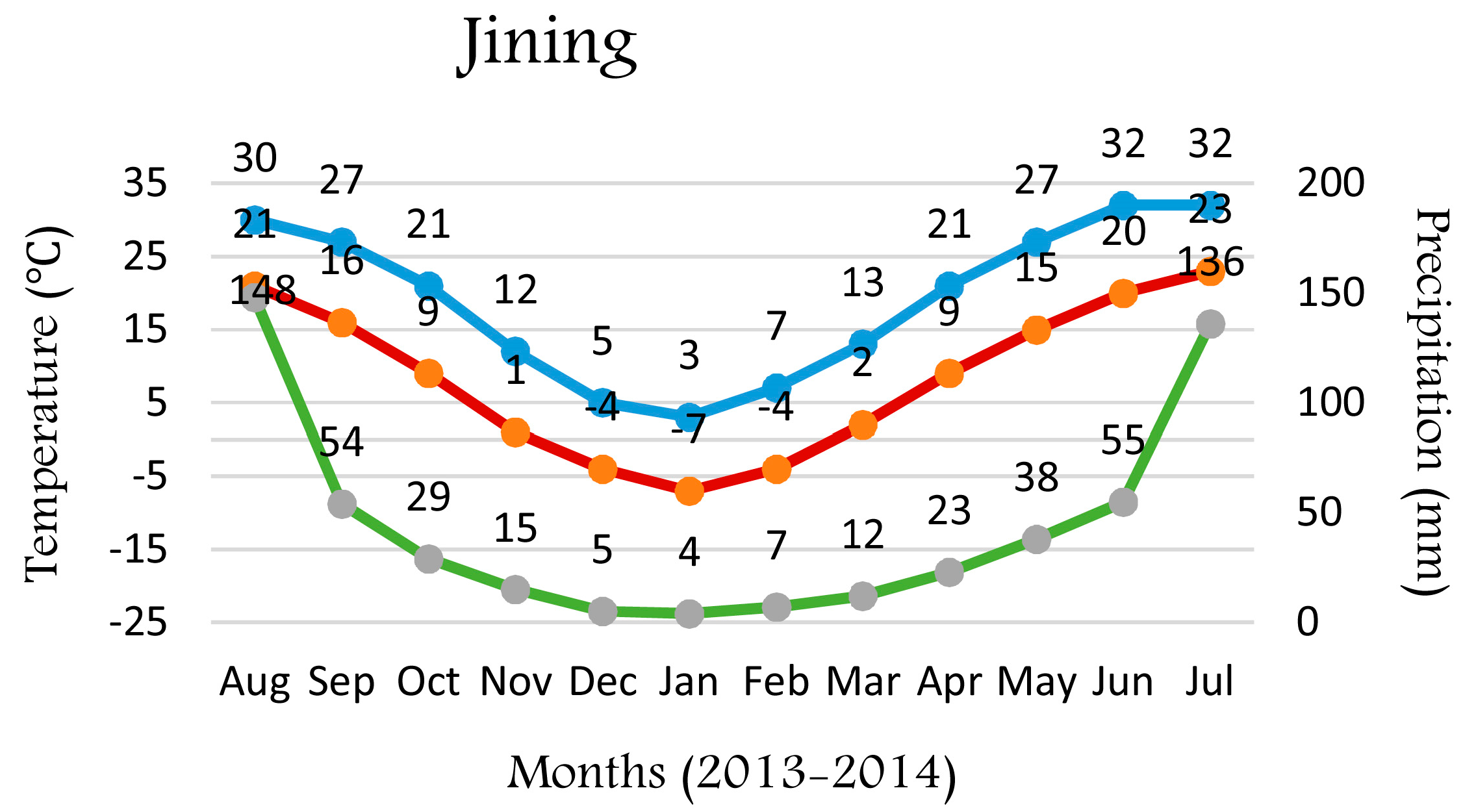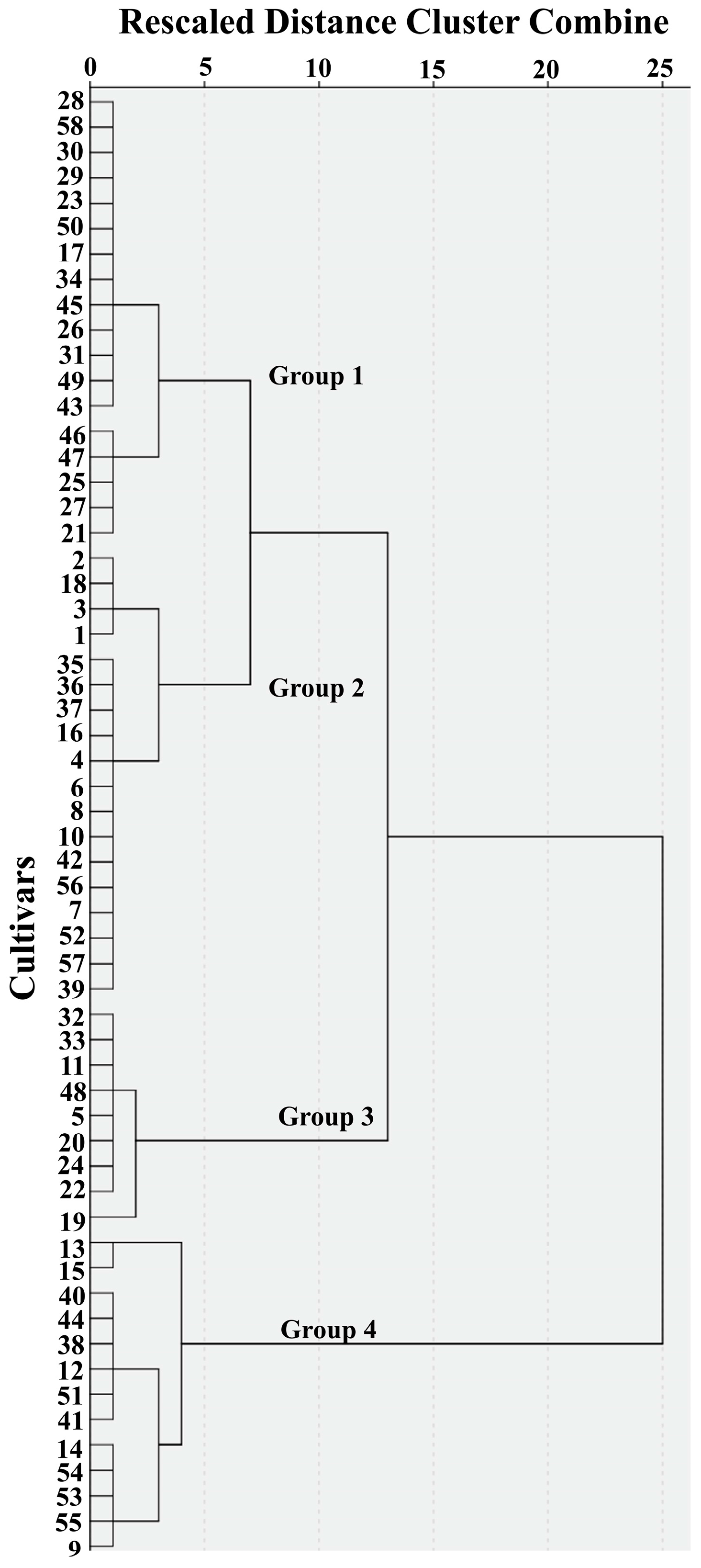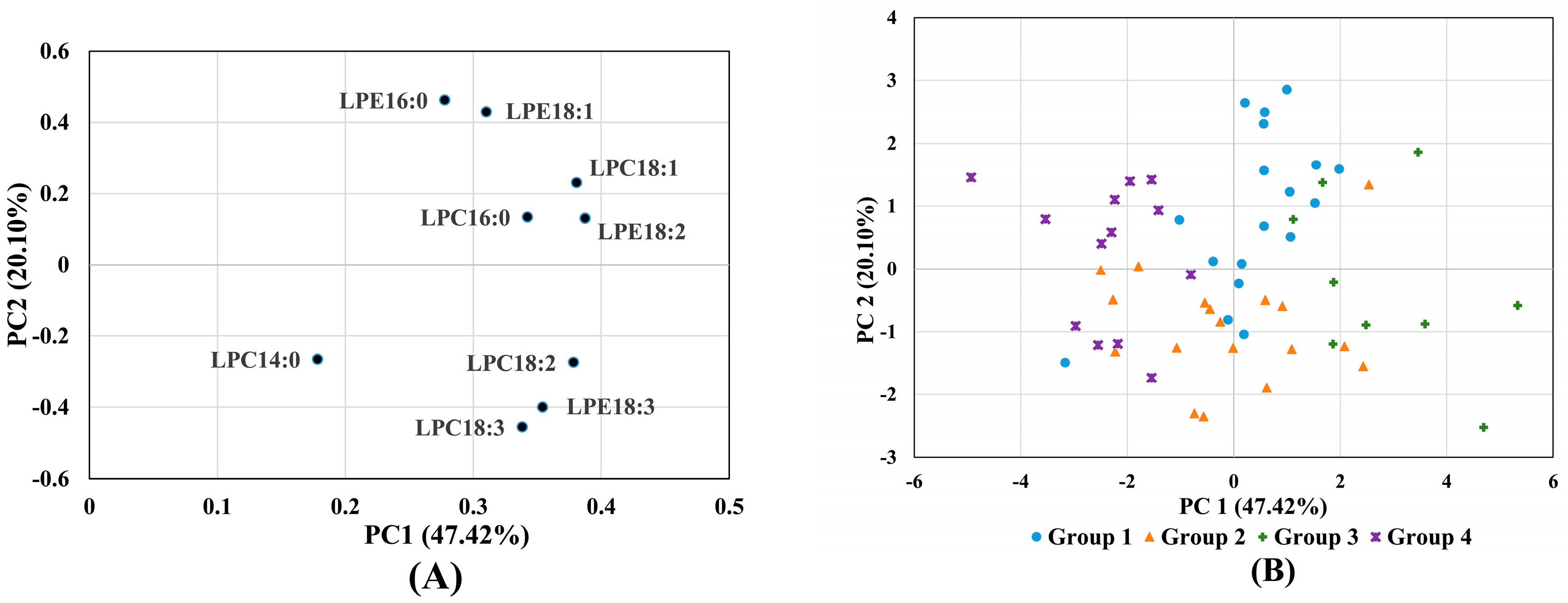Genotypic Variation in Wheat Flour Lysophospholipids
Abstract
:1. Introduction
2. Materials and Methods
2.1. Plant Materials
2.2. Hardness Measurement
2.3. Chemicals
2.4. Extraction of LPLs
2.5. LCMS Analysis of LPLs
2.6. Statistical Analysis
3. Results
3.1. Concentration of Individual and Total Lysophospholipids
3.2. Genetic and Environmental Effects on Wheat LPL Composition
3.3. Correlation Analysis of Lysophospholipids
3.4. Principal Component Analysis and Hierarchical Cluster Analysis of Lysophospholipids
3.5. Correlation Analysis of Lysophospholipids and Kernel Hardness
4. Discussion
5. Conclusions
Supplementary Materials
Acknowledgments
Conflicts of Interest
References
- Pauly, A.; Pareyt, B.; Fierens, E.; Delcour, J.A. Wheat (triticum aestivum L. and T. Turgidum L. ssp. Durum) kernel hardness: I. Current view on the role of puroindolines and polar lipids. Compr. Rev. Food Sci. Food Saf. 2013, 12, 413–426. [Google Scholar] [CrossRef]
- Hargin, K.D.; Morrison, W.R. The distribution of acyl lipids in the germ, aleurone, starch and non-starch endosperm of four wheat varieties. J. Sci. Food Agric. 1980, 31, 877–888. [Google Scholar] [CrossRef]
- Gerits, L.R.; Pareyt, B.; Delcour, J.A. A lipase based approach for studying the role of wheat lipids in bread making. Food Chem. 2014, 156, 190–196. [Google Scholar] [CrossRef] [PubMed]
- Pauly, A.; Pareyt, B.; Fierens, E.; Delcour, J.A. Wheat (triticum aestivum L. and T. Turgidum L. ssp. Durum) kernel hardness: II. Implications for end-product quality and role of puroindolines therein. Compr. Rev. Food Sci. Food Saf. 2013, 12, 427–438. [Google Scholar] [CrossRef]
- Goesaert, H.; Brijs, K.; Veraverbeke, W.S.; Courtin, C.M.; Gebruers, K.; Delcour, J.A. Wheat flour constituents: How they impact bread quality, and how to impact their functionality. Trends Food Sci. Technol. 2005, 16, 12–30. [Google Scholar] [CrossRef]
- Tong, C.; Liu, L.; Waters, D.L.E.; Huang, Y.; Bao, J. The contribution of lysophospholipids to pasting and thermal properties of nonwaxy rice starch. Carbohydr. Polym. 2015, 133, 187–193. [Google Scholar] [CrossRef] [PubMed]
- Ahmadi-Abhari, S.; Woortman, A.J.; Hamer, R.J.; Oudhuis, A.A.; Loos, K. Influence of lysophosphatidylcholine on the gelation of diluted wheat starch suspensions. Carbohydr. Polym. 2013, 93, 224–231. [Google Scholar] [CrossRef] [PubMed]
- Oda, S.; Schofield, J.D. Characterisation of friabilin polypeptides. J. Cereal Sci. 1997, 26, 29–36. [Google Scholar] [CrossRef]
- Greenblatt, G.A.; Bettge, A.D.; Morris, C.F. Relationship between endosperm texture and the occurrence of friabilin and bound polar lipids on wheat starch. Cereal Chem. 1995, 72, 172–176. [Google Scholar]
- Feiz, L.; Wanjugi, H.W.; Melnyk, C.W.; Altosaar, I.; Martin, J.M.; Giroux, M.J. Puroindolines co-localize to the starch granule surface and increase seed bound polar lipid content. J. Cereal Sci. 2009, 50, 91–98. [Google Scholar] [CrossRef]
- Day, L.; Bhandari, D.G.; Greenwell, P.; Leonard, S.A.; Schofield, J.D. Characterization of wheat puroindoline proteins. FEBS J. 2006, 273, 5358–5373. [Google Scholar] [CrossRef] [PubMed]
- Chichti, E.; George, M.; Delenne, J.-Y.; Lullien-Pellerin, V. Changes in the starch-protein interface depending on common wheat grain hardness revealed using atomic force microscopy. Plant Sci. 2015, 239, 1–8. [Google Scholar] [CrossRef] [PubMed]
- Morris, C.F.; Greenblatt, G.A.; Bettge, A.D.; Malkawi, H.I. Isolation and characterization of multiple forms of friabilin. J. Cereal Sci. 1994, 20, 167–174. [Google Scholar] [CrossRef]
- Meredith, P.; Dengate, H.N.; Morrison, W.R. The lipids of various sizes of wheat starch granules. Starch-Stärke 1978, 30, 119–125. [Google Scholar] [CrossRef]
- Morrison, W.R.; Coventry, A.M. Extraction of lipids from cereal starches with hot aqueous alcohols. Starch-Stärke 1985, 37, 83–87. [Google Scholar] [CrossRef]
- Liu, L.; Tong, C.; Bao, J.; Waters, D.L.; Rose, T.J.; King, G.J. Determination of starch lysophospholipids in rice using liquid chromatography-mass spectrometry (LC-MS). J. Agric. Food Chem. 2014, 62, 6600–6607. [Google Scholar] [CrossRef] [PubMed]
- Morrison, W.R. Lipids in cereal starches: A review. J. Cereal Sci. 1988, 8, 1–15. [Google Scholar] [CrossRef]
- Tong, C.; Liu, L.; Waters, D.L.; Rose, T.J.; Bao, J.; King, G.J. Genotypic variation in lysophospholipids of milled rice. J. Agric. Food Chem. 2014, 62, 9353–9361. [Google Scholar] [CrossRef] [PubMed]
- Murata, N.; Los, D.A. Membrane fluidity and temperature perception. Plant Physiol. 1997, 115, 875–879. [Google Scholar] [CrossRef] [PubMed]
- Vaughan, D.A.; Lu, B.-R.; Tomooka, N. The evolving story of rice evolution. Plant Sci. 2008, 174, 394–408. [Google Scholar] [CrossRef]
- Shewry, P.R. Wheat. J. Exp. Bot. 2009, 60, 1537–1553. [Google Scholar] [CrossRef] [PubMed]
- Kwasniewska-karolak, I.; Rosicka-Kaczmarek, J.; Nebesny, E. Properties of amylose-lipid complexes from different wheat varieties harvested in different years. Orig. Sci. Pap. 2010, 14, 135–140. [Google Scholar]
- Kinney, A.J. Phospholipid head groups. In Lipid Metabolism in Plants; Moore, T.S.J., Ed.; CRC Press: Boca Raton, FL, USA, 1993; pp. 259–284. [Google Scholar]
- D’Arrigo, P.; Servi, S. Synthesis of lysophospholipids. Molecules 2010, 15, 1354–1377. [Google Scholar] [CrossRef] [PubMed]
- Yoshida, H.; Tanigawa, T.; Yoshida, N.; Kuriyama, I.; Tomiyama, Y.; Mizushina, Y. Lipid components, fatty acid distributions of triacylglycerols and phospholipids in rice brans. Food Chem. 2011, 129, 479–484. [Google Scholar] [CrossRef]
- Morrison, W.R. Wheat lipids: Structure and functionality. In Wheat; Bushuk, W., Rasper, V.F., Eds.; Springer: New York, NY, USA, 1994; pp. 128–142. [Google Scholar]
- Liu, L.; Deseo, M.A.; Morris, C.; Winter, K.M.; Leach, D.N. Investigation of α-glucosidase inhibitory activity of wheat bran and germ. Food Chem. 2011, 126, 553–561. [Google Scholar] [CrossRef]
- Troyer, A.F. Adaptedness and heterosis in corn and mule hybrids. Crop Sci. 2006, 46, 528–543. [Google Scholar] [CrossRef]
- Finnie, S.M.; Jeannotte, R.; Morris, C.F.; Faubion, J.M. Variation in polar lipid composition among near-isogenic wheat lines possessing different puroindoline haplotypes. J. Cereal Sci. 2010, 51, 66–72. [Google Scholar] [CrossRef]
- Wilde, P.J.; Clark, D.C.; Marion, D. Influence of competitive adsorption of a lysopalmitoylphosphatidylcholine on the functional properties of puroindoline, a lipid-binding protein isolated from wheat flour. J. Agric. Food Chem. 1993, 41, 1570–1576. [Google Scholar] [CrossRef]
- Kim, K.H.; Feiz, L.; Martin, J.M.; Giroux, M.J. Puroindolines are associated with decreased polar lipid breakdown during wheat seed development. J. Cereal Sci. 2012, 56, 142–146. [Google Scholar] [CrossRef]
Sample Availability: Wheat flour samples are available from the authors. |




| LPLs | Mean (μg/g) | ±SD 2 (μg/g) | CV 3 (%) | Percentage 4 (%) |
|---|---|---|---|---|
| LPC 18:3 | 246.9 | ±43.8 | 17.7 | 2.0–3.8 |
| LPC 18:2 | 3578.8 | ±298.5 | 8.3 | 38.0–44.8 |
| LPC 18:1 | 587.2 | ±75.3 | 12.8 | 4.9–8.3 |
| LPC 14:0 | 13.4 | ±8.1 | 60.2 | 0–0.5 |
| LPC 16:0 | 3195.3 | ±236.7 | 7.4 | 33.3–41.4 |
| LPE 18:3 | 14 | ±6.3 | 44.6 | 0–0.3 |
| LPE 18:2 | 552.2 | ±47.7 | 8.6 | 5.3–7.4 |
| LPE 18:1 | 29.5 | ±8.7 | 29.3 | 0.1–0.6 |
| LPE 16:0 | 379.7 | ±46.1 | 12.1 | 3.3–5.5 |
| Total LPCs | 7621.5 | ±553.9 | 7.3 | 87.0–90.1 |
| Total LPEs | 975.4 | ±90.0 | 9.2 | 9.9–13.0 |
| Total LPLs | 8596.9 | ±620.3 | 7.2 | 100 |
| LPLs | Mean Square Values from Analysis of Variance (ANOVA) | |||
|---|---|---|---|---|
| Environment (Location) | Biological Replicate | Genotype | G × E 2 | |
| df 1 | 1 | 1 | 57 | 57 |
| LPC 18:3 | 4785.2 ** | 35.1 | 6093.7 ** | 621.2 |
| LPC 18:2 | 127,610 | 46,065.3 | 230,811 ** | 42,794.1 |
| LPC 18:1 | 136,571 ** | 1879 | 15,433.3 ** | 2204.1 |
| LPC 14:0 | 3489.8 ** | 5.1 | 135.7 ** | 22.1 |
| LPC 16:0 | 100,213 * | 30,206.3 | 148,042 ** | 30,041.8 |
| LPE 18:3 | 37.8 * | 21 | 127.7 ** | 9.1 |
| LPE 18:2 | 303.4 | 320.5 | 6059.8 ** | 1109.8 |
| LPE 18:1 | 4558.3 ** | 0.8 | 169.7 ** | 36.4 ** |
| LPE 16:0 | 3.6 | 362.9 | 6441.7 ** | 734.6 |
| Total LPCs | 97,405.9 | 192,260 | 778,837 ** | 174,199.1 |
| Total LPEs | 6516.1 | 1779.2 | 22,645.9 ** | 3473 |
| Total LPLs | 53,541.5 | 230,966 | 980,810 ** | 212,343.2 |
| LPLs | Environment (Location) % | Replicate % | Genotype % | G × E 1 % | Residual % |
|---|---|---|---|---|---|
| LPC 18:3 | 1.9 | 0 | 70.1 | 3.8 | 24.1 |
| LPC 18:2 | 0.4 | 0.9 | 52.2 | 1.3 | 45.2 |
| LPC 18:1 | 18.5 | 0 | 53.1 | 6.9 | 21.5 |
| LPC 14:0 | 37.3 | 0 | 35.4 | 0.2 | 27.1 |
| LPC 16:0 | 1.1 | 0 | 52.1 | 6.4 | 40.3 |
| LPE 18:3 | 0.7 | 0 | 74.5 | 0 | 24.8 |
| LPE 18:2 | 0 | 0 | 54.2 | 2.2 | 43.6 |
| LPE 18:1 | 41.4 | 0 | 35.8 | 15.7 | 7.1 |
| LPE 16:0 | 0 | 0 | 66.8 | 0.8 | 32.4 |
| Total LPCs | 0 | 0 | 49.1 | 5.4 | 45.4 |
| Total LPEs | 0.3 | 0 | 58.8 | 1.9 | 38.9 |
| Total LPLs | 0 | 0 | 49.9 | 4.2 | 45.9 |
| Hardness (n = 58) | LPC18:3 | LPC18:2 | LPC18:1 | LPC14:0 | LPC16:0 | LPE18:3 | LPE18:2 | LPE18:1 | LPE16:0 | Total LPC | Total LPE | Total LPL | |
| r value | 0.14 | 0.08 | 0.39 | −0.10 | 0.32 | 0.15 | 0.18 | 0.34 | 0.39 | 0.25 | 0.35 | 0.28 | |
| p value | 0.306 | 0.530 | 0.002 | 0.443 | 0.013 | 0.253 | 0.173 | 0.008 | 0.002 | 0.055 | 0.007 | 0.034 |
© 2017 by the authors. Licensee MDPI, Basel, Switzerland. This article is an open access article distributed under the terms and conditions of the Creative Commons Attribution (CC BY) license (http://creativecommons.org/licenses/by/4.0/).
Share and Cite
Liu, L.; Guo, Q.; He, Z.; Xia, X.; Waters, D.L.E.; Raymond, C.A.; King, G.J. Genotypic Variation in Wheat Flour Lysophospholipids. Molecules 2017, 22, 909. https://doi.org/10.3390/molecules22060909
Liu L, Guo Q, He Z, Xia X, Waters DLE, Raymond CA, King GJ. Genotypic Variation in Wheat Flour Lysophospholipids. Molecules. 2017; 22(6):909. https://doi.org/10.3390/molecules22060909
Chicago/Turabian StyleLiu, Lei, Qi Guo, Zhonghu He, Xianchun Xia, Daniel L. E. Waters, Carolyn A. Raymond, and Graham J. King. 2017. "Genotypic Variation in Wheat Flour Lysophospholipids" Molecules 22, no. 6: 909. https://doi.org/10.3390/molecules22060909
APA StyleLiu, L., Guo, Q., He, Z., Xia, X., Waters, D. L. E., Raymond, C. A., & King, G. J. (2017). Genotypic Variation in Wheat Flour Lysophospholipids. Molecules, 22(6), 909. https://doi.org/10.3390/molecules22060909







